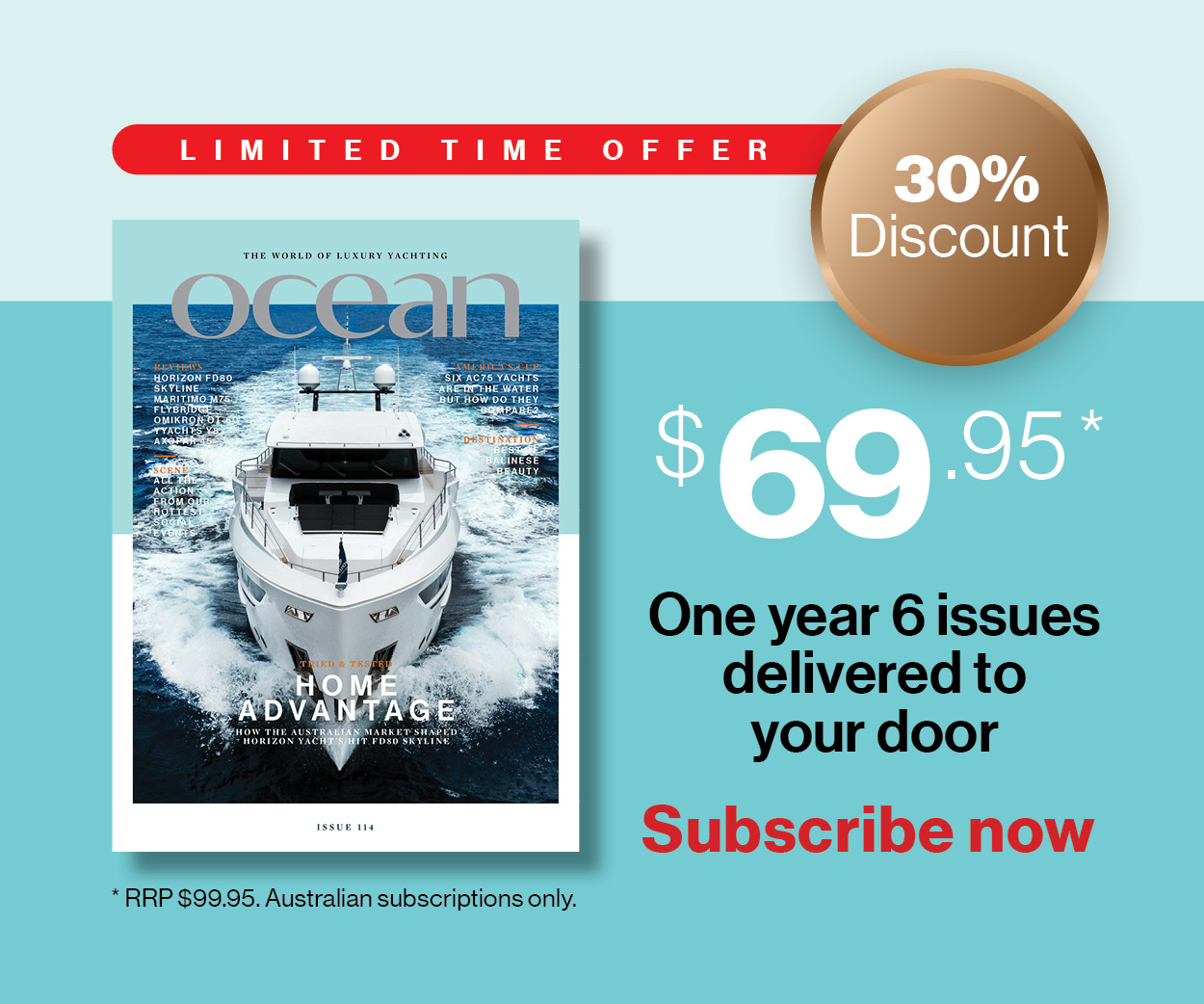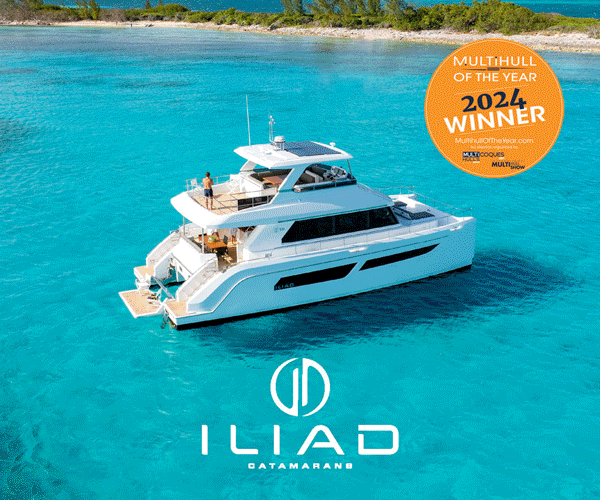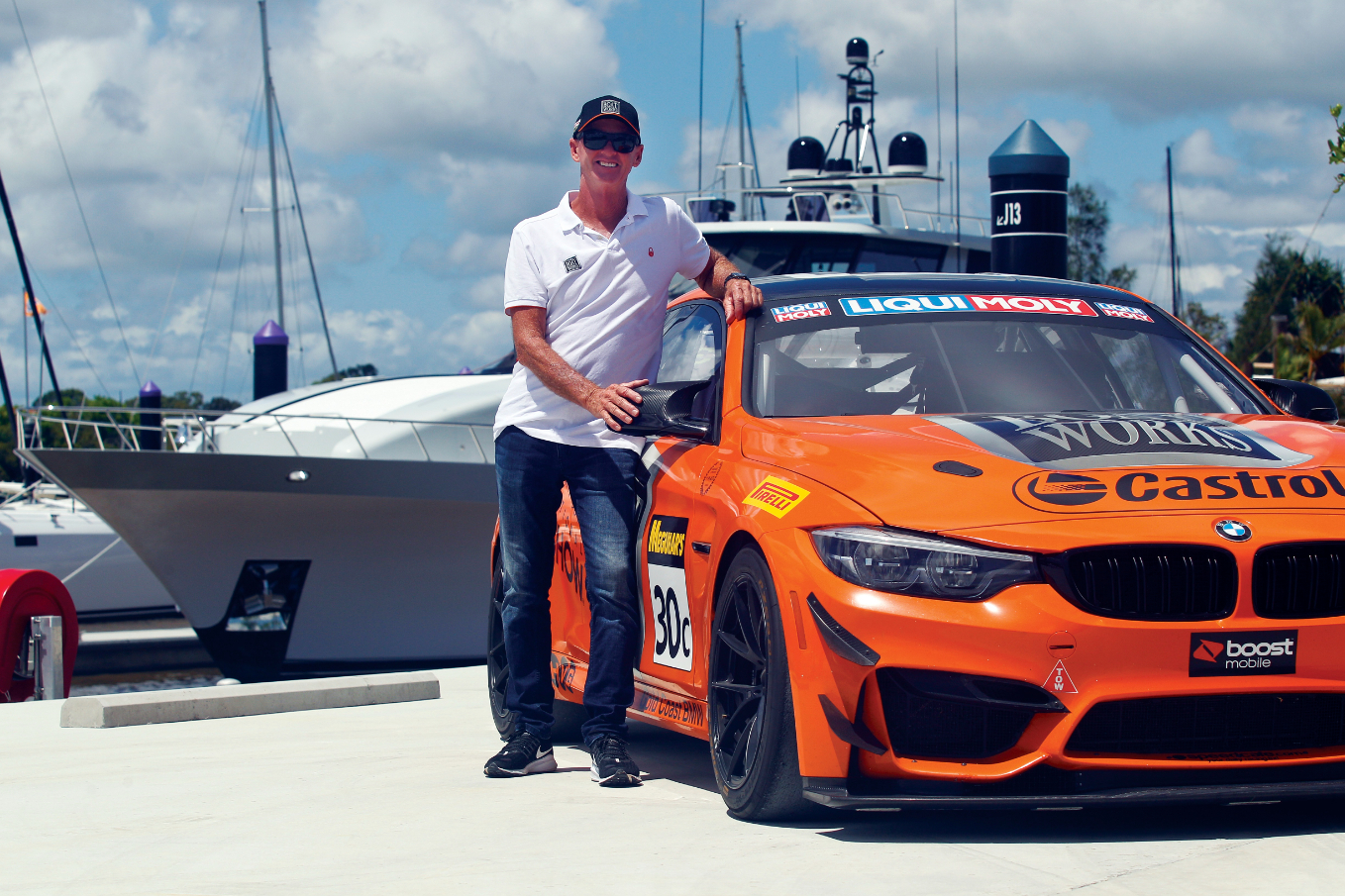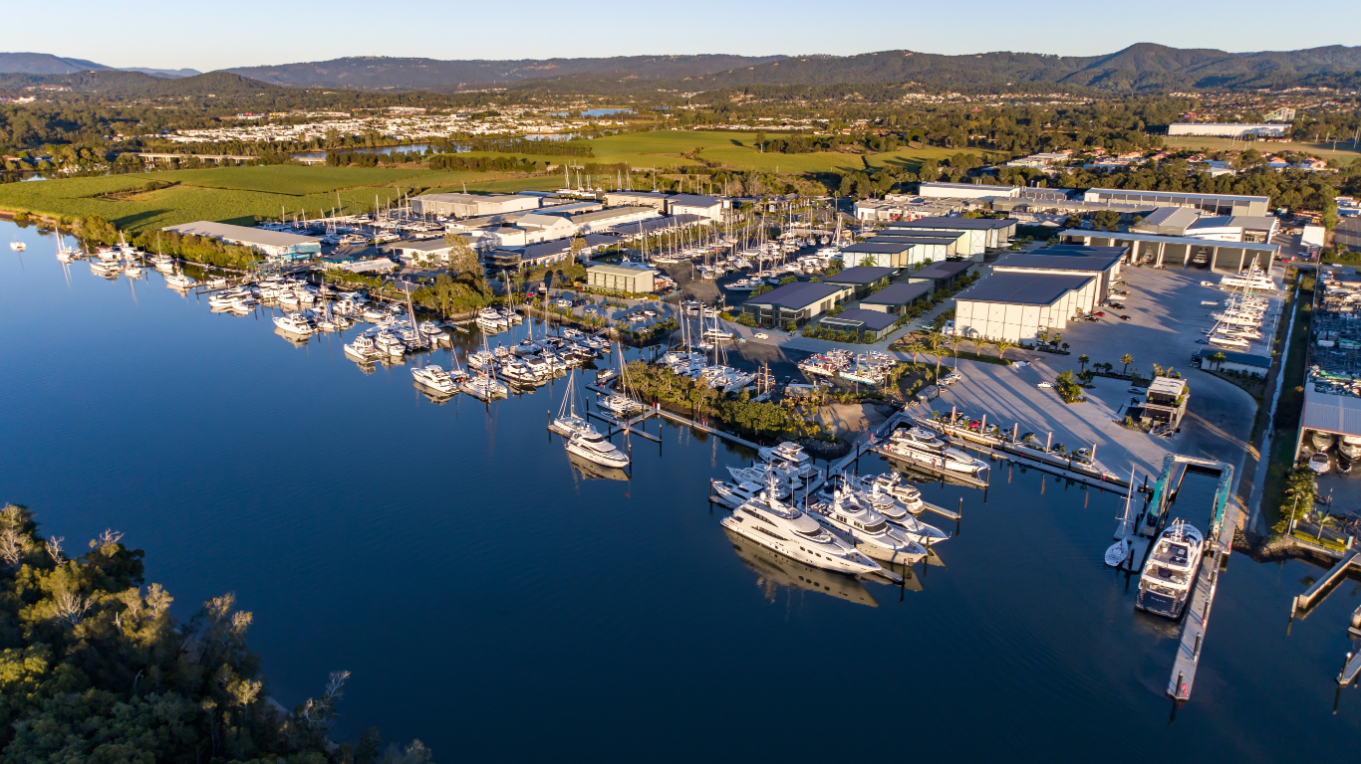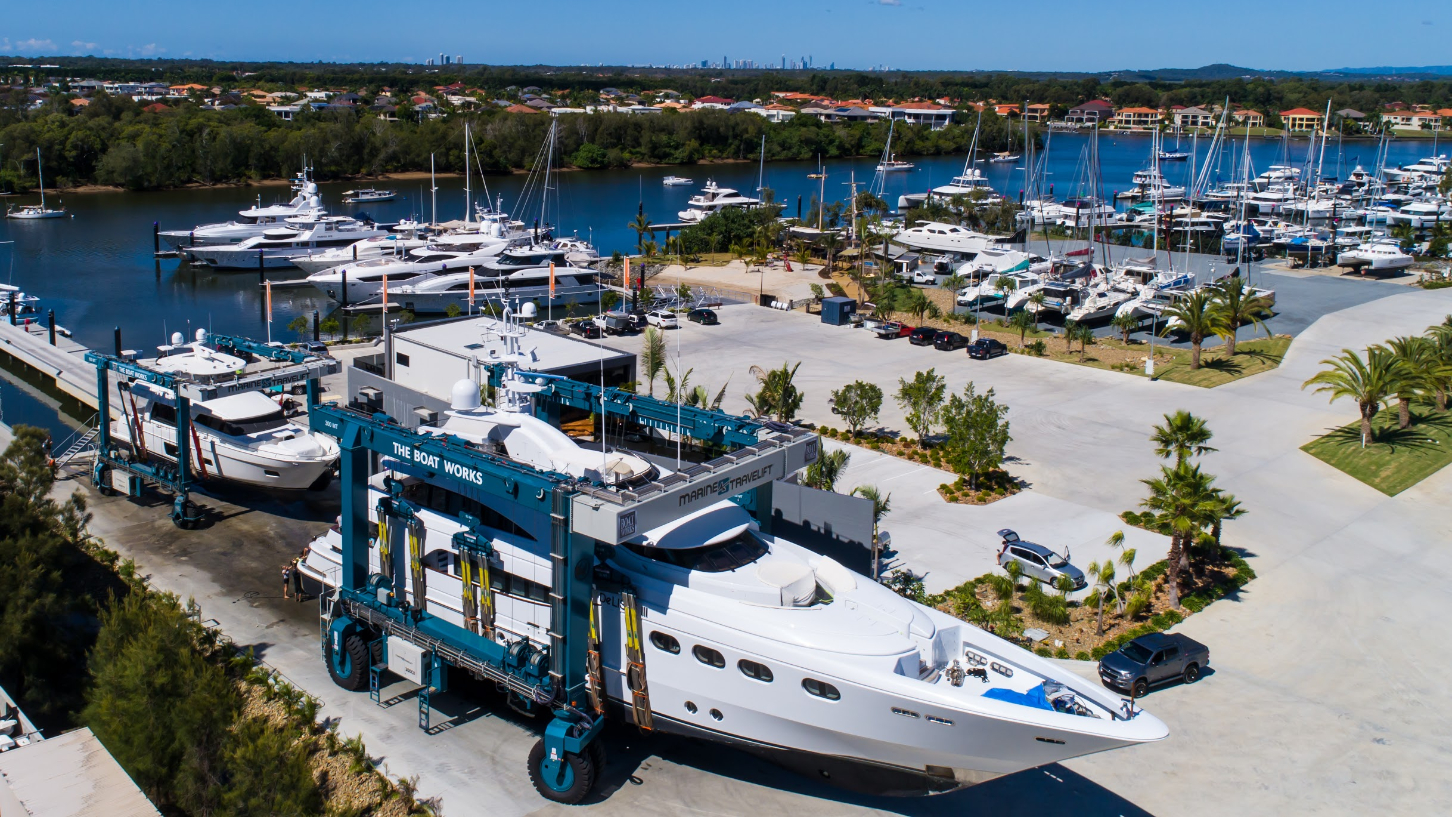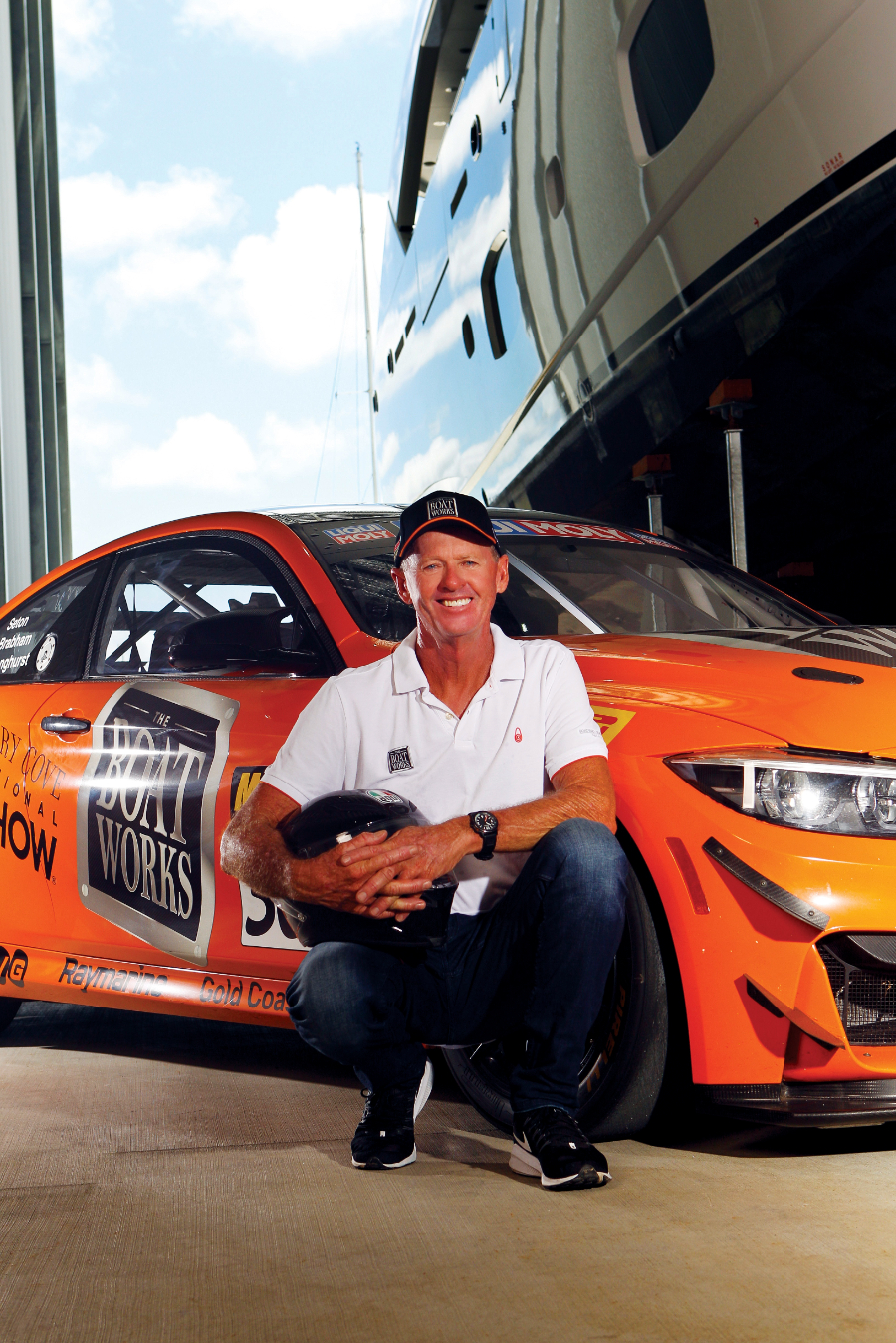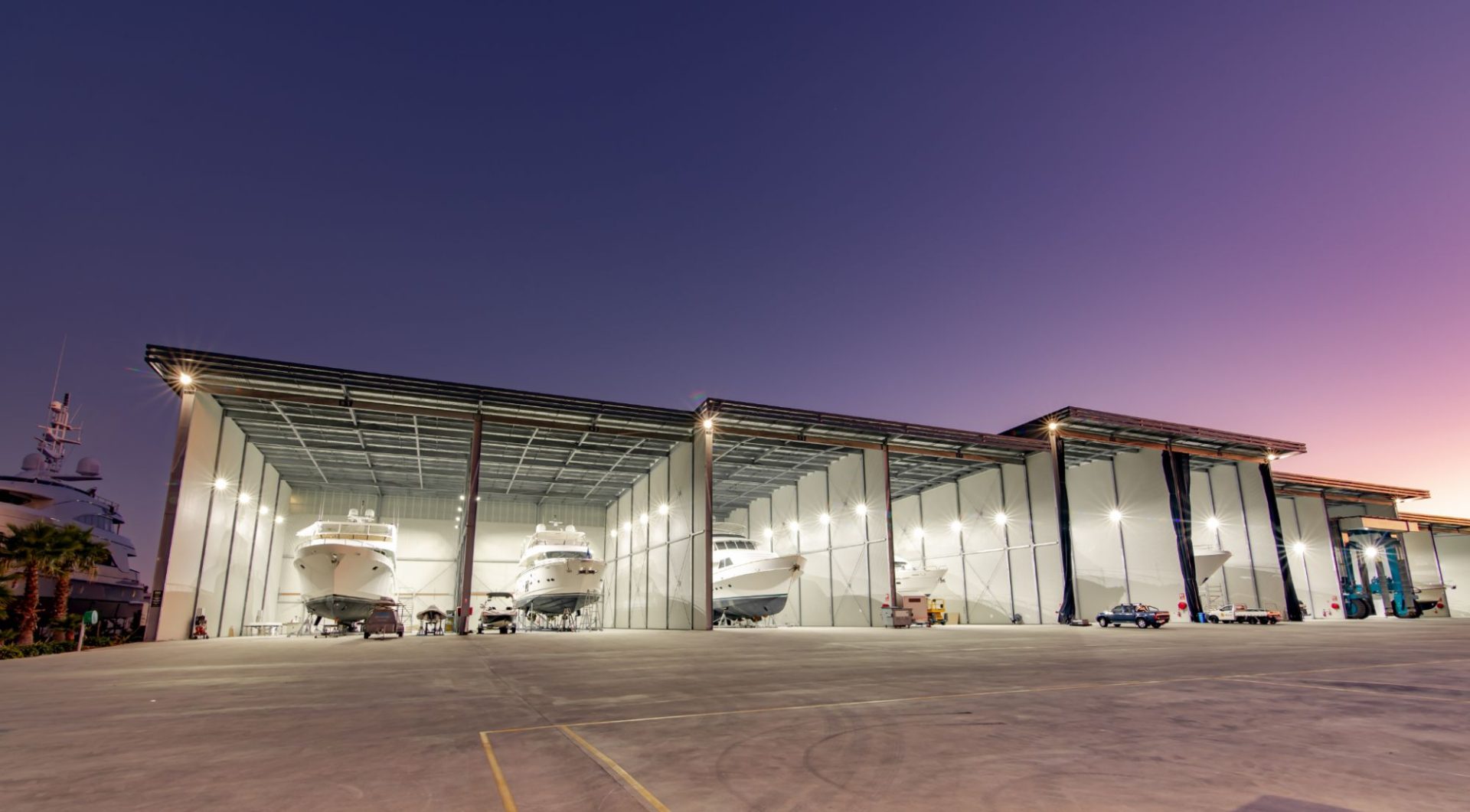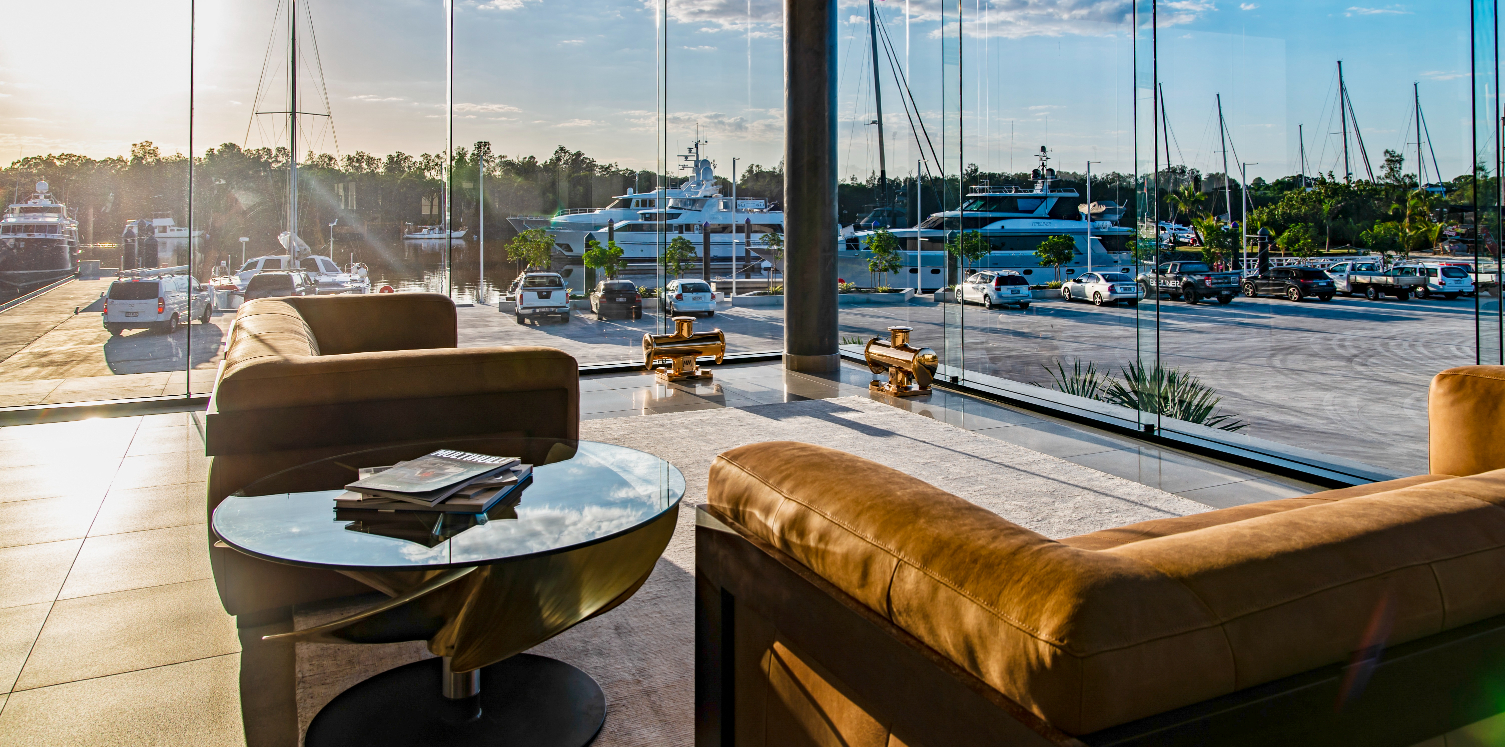Powerplay: Tony Longhurst
Motor racing fans know him as the two-time winner of the Bathurst 1000 who went on to race internationally and take several crowns in the touring car circuit. Still, there’s more to Tony Longhurst than ex-racing champ and car connoisseur.
Written by Jeni Bone
14 April 2022
The Boat Works, located in the heart of the Gold Coast Marine Precinct, Coomera, Tony Longhurst is the indefatigable mentor to an equally energised team and builds on a proud 45-year history in the region.
He was raised in Sydney’s south, surfing, waterskiing and crazy about cars. At the age of 18, he set the Australian waterski speed record, whipping across the water at 201 kilometres per hour.
Tony and his brother Rodney – who since 2012 has been at the helm of Riviera Motor Yachts, adjacent to The Boat Works – were carpenters by trade, which equipped them with the practical tools for jobs for life, and to build an empire.
His dad, John Longhurst – entrepreneur, boatbuilder, developer and pioneer of the Gold Coast’s tourism industry, who recently passed away, aged 89 – was a major influence and remains a guiding beacon to Tony’s ambition.
In the late 1970s, John Longhurst returned from a trip to the US with plans to conjure from the pastures of Coomera Australia’s first theme park: Dreamworld.
Tony was on the tools, bringing John’s vision to life and, in the process, built a Queensland landmark and award-winning Australian icon that attracts around a million visitors each year, supporting around 40,000 jobs over four decades.
“For four years, there were only seven of us on site, working seven days,” recalls Tony. “It was a massive undertaking, and 40 years on, our family is still investing in the area.”
After Dreamworld opened, Tony’s passion for speed and an inherited love of cars led him to a career in motor racing. In 1985, under the tutelage of Frank Gardner, who led JPS Racing, and Ron Meacham, who headed up BMW Australia when Tony took to the track, his laser focus, stamina and quiet determination gave him the edge.
Ocean magazine: Tony, you’re famous for your car racing success at Bathurst and many other touring championships. Can you tell us something about your car racing days we might not know?
Tony Longhurst: I spent 25 years on the track, competing in Australia, New Zealand, the US and UK. I won the Bathurst 1000 twice (racing both Ford and Holden), won the Bathurst 12 Hour in a Mitsubishi Lancer Evo, and won the Australian Touring Car Championship in a BMW.
I retired in 2019 after racing at Mount Panorama in the 2018 Bathurst 12-hour endurance race. Our GT4 BMW won its class, which was a satisfying way to wrap it up.
Since retiring, I’ve never looked back at old videos, but I watched the races from 1985–92 with my dad the other day, and couldn’t believe how focused I was on racing. I was obsessed with trying to get the most out of my car and myself.
I’ve applied that same focus every step along the way to develop The Boat Works, no matter what the challenge. I had to navigate the layers of bureaucracy, which was a nightmare and harder than winning Bathurst! We’ve now built a world-class facility without peer.
You come from a very well-known boating family that has owned some significant yachts over the years, and your brother Rodney owns Riviera. What are some of your favourite memories of growing up on the water?
We grew up in Yowie Bay in Port Hacking, New South Wales, so every spare moment I was on the water. Dad was making boats under the Pride brand, so we always had a boat.
From a young age, I was driving the boat, learning to ski, to barefoot. I was obsessed with that for a long time. It was a different era; so much more freedom. Life was easier then.
How many boats have you owned over the years – sailing and power – and what do you most enjoy about them?
I’ve been lucky. I’ve raced, owned ski boats, cruisers – probably a dozen. And now we’ve enjoyed a decade of sailing catamarans.
My favourite is our current cat Kato, a 19.5-metre Schionning G Force 2000 specifically built by Julian Griffiths and his team at Noosa Marine. Julian’s a racer and loves boats; we’re a good combo.
Kato is testament to a thriving Australian boatbuilding industry and the product of excellent working relationships between client, designer, builder and suppliers.
Tell us about your journey transitioning from the car to the boating industry.
I made the move from supercars to superyachts in 2012, taking over The Boat Works from Rodney and his business partner and Riviera CEO Wes Moxey.
The original yard was established in 1980 by Bruce ‘Sharkie’ Harris on ten acres adjacent to the Dreamworld site. At the time, it was cow paddocks, farmhouses and sheds. Since then, The Boat Works has doubled in size to two yards, totalling 55 acres and offering an experience like no other.
We’ve created an innovative and modern boatyard, marina and superyacht yard with unlimited hardstand, expansive storage and superyacht sheds, accommodating everything from wide-bodied catamarans, motor yachts and sailboats to superyachts.
Great care and attention to detail have been taken in every detail of the facilities, which is arguably the cleanest, greenest and most comprehensive facility in the world.
Owners, captains and crew experience the VIP treatment as every element on site has been designed to offer an experience.
Lawns, palms, even citrus trees make up the beautiful landscape to create an oasis throughout. No less, the experience extends to the bespoke and welcoming VIP lounge, which boasts an interior decor that wouldn’t look out of place on most superyachts.
We’re proud to say we carry out more than 5,000 boat movements per year, hauling out a range of vessels from the smallest leisure craft to superyachts up to 75 metres for both in- and out-of-water service, maintenance and refits.
We’ve also installed Fox ecosystems, filtration and environmental water systems throughout the site, ensuring the diversion of contaminated run-off from the stormwater and waterways.
Applying science to all aspects of the new build, the superyacht sheds and hardstand construction allows the catchment of all run-off water to be effectively filtered via bio garden beds that aggregate and ensure full drainage.
To reduce our carbon emissions, we’ve installed a 100 kW solar panel system in the south yard with a similar system to be installed in the superyacht yard.
Last year, Seabin COO Mahi Paquette and Marine Ecologist David Turton visited The Boat Works to demonstrate the V5 Seabin trash skimmer, which intercepts floating debris and macro- and micro-plastics. They were impressed with what we’ve achieved and compared it to the most progressive yards in the world.
What keeps your working day fresh? What do you like about the industry?
Ninety-nine percent of the people we work with are good quality people; they’re great to deal with and care about the environment.
Every single day is different – the weather, customers, jobs, challenges. There’s always something you can improve on. We’re always trying to tweak things to make the yards more efficient, more pleasant for customers, and bring more work in for our tenants.
What are the hallmarks of The Boat Works’ ethos, its people and brand?
Our aim from the start was to develop the world’s most innovative, five-star boat resort. As well as state-of-the-art facilities, our people deliver a personalised service. Our staff are like family, and we extend that warmth to everyone who comes here.
We have a great culture and community with over 1,000 people on site. Since 2013, we’ve had minimal staff turnover – it’s still the same, energetic, young team in charge.
Every single person here is passionate about the boating lifestyle and the environment. We’re custodians of this section of coastline, and we’ve enhanced it from the neglected land it used to be.
Another factor is we won’t be beaten on price. We go the extra mile and, without a doubt, it’s the cleanest yard in the world.
What’s next for you and The Boat Works in terms of growth?
We’ve built the best slipway in Australia in less than 12 months. The $100-million superyacht yard and marina have been open a year. We welcomed more than 2,300 vessels over both yards during 2020, even during COVID restrictions.
We now haul 60-plus boats up to 55-metres out of the water each week. The bigger boats want the Super sheds, so we built four more Mega Sheds, 20-metres in height.
We’re at capacity now, which is beyond our wildest predictions.
Stage 3 is now complete – a $30-million services hub for marine businesses, including workshops and tenancies. We now have more than 80 tenants on site and most are reporting a marked rise in demand, hiring more skilled trades to keep pace.
Most importantly, my main objective since the start of this project is job creation. The Boat Works’ new superyacht yard has created 1,000 permanent jobs and diversified businesses.
More boats mean more jobs in the marine and boating industries, as well as in hospitality, tourism, provisioning – all the things visitors to our region want to see and experience.
What proportion of your business do you project will be in the superyacht sector (over 30 metres) in the coming five years compared to the smaller yacht sector?
There are two different yards, both going non-stop. For over 100-footers, our superyacht yard has ten sheds and ten hardstand spaces. We’re building an additional five superyacht sheds, which will be done by the end of the year.
In The Boat Works south, we haul out about 50 boats a week, averaging around 45 feet. In the superyacht yard (north) at the moment, we have 31 superyachts out of the water this week and the marina is full, with around 12 big white boats. These vessels stay longer and have more work done on them.
This momentum shows no sign of easing now that Australians are throwing themselves into boating in a big way since COVID travel restrictions.
Working in the boating industry for close to ten years now, what have been some of the most significant changes?
The boats have become larger and more high-tech, and marine businesses have become more professional to service them. Since I’ve been involved, the Marine Precinct has come of age.
Riviera is doing record numbers, Maritimo is doing record numbers, and our on-site chandlery is doing great business. Everything is here; the Marine Precinct is ideally located. Why would you take your boat anywhere else in Australia?
Right now, our industry is under intense scrutiny to become more environmentally friendly. What do you believe needs to change and how can this be achieved?
Attitude and investment. If your marina was built 50 years ago, or 20 years ago, there were different regulations. Today, requirements are so stringent. You have to invest millions in getting everything right.
We’re lucky we had the capital and cash flow to do it right. Our yard is in a league of its own in terms of environmental innovations and attention to detail.
What’s the biggest challenge ahead for refit yards?
Our workload is increasing, the boats are getting bigger, there are more of them and they are better quality, so as an industry we need to invest in training skilled personnel. Refits are becoming more prevalent.
Environmental issues are a concern for marinas. Approvals are a costly, time-consuming, complicated process, and this is especially challenging for smaller operators.
In terms of customer service and attention to detail, The Boat Works has lifted the bar, and we keep finding ways to raise it higher.
What sets The Boat Works apart from other yards?
Our competitive edge is the combination of high-quality service, knowledgeable staff and the amenities on site.
Our customers enjoy impeccably clean ensuites and free laundry facilities, and locals and visitors – non-boaties – drop in to enjoy the waterfront Galley restaurant, Cafe Twenty5 and our car museum, which showcases automotive history in dozens of vintage, classic and prestige cars.
We have built, from nothing, something nobody has ever seen or experienced before. That’s our legacy.


